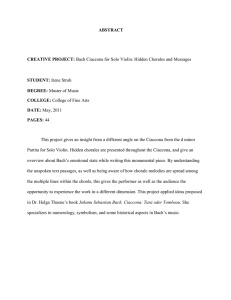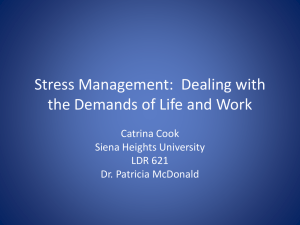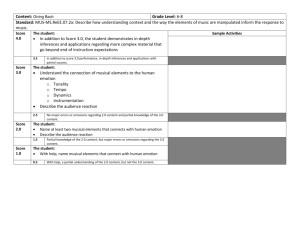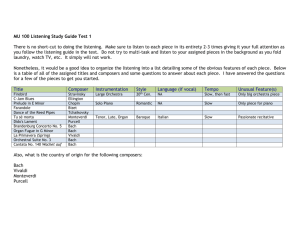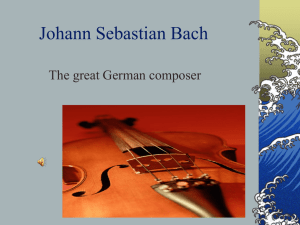Chapter 23. Meeting 23, Approaches: Expert Systems and Style Emulation 23.1. Announcements
advertisement
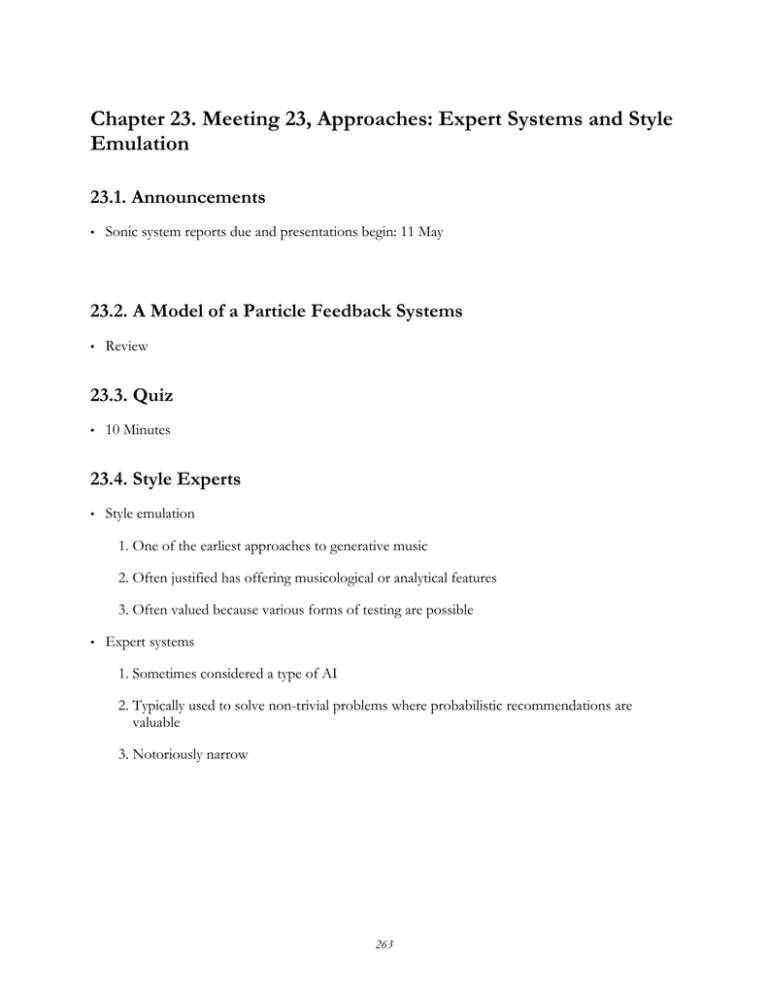
Chapter 23. Meeting 23, Approaches: Expert Systems and Style Emulation 23.1. Announcements • Sonic system reports due and presentations begin: 11 May 23.2. A Model of a Particle Feedback Systems • Review 23.3. Quiz • 10 Minutes 23.4. Style Experts • Style emulation 1. One of the earliest approaches to generative music 2. Often justified has offering musicological or analytical features 3. Often valued because various forms of testing are possible • Expert systems 1. Sometimes considered a type of AI 2. Typically used to solve non-trivial problems where probabilistic recommendations are valuable 3. Notoriously narrow 263 23.5. Reading: Ebcioglu: An Expert System for Harmonizing Four-part Chorales • Ebcioglu, K. 1988. “An Expert System for Harmonizing Four-part Chorales.” Computer Music Journal 12(3): 43-51. • What is meant by the term “analysis by synthesis'? Is such an approach broadly applicable in music?” • Why do the author’s reject the approach of coding musical rules in a programming language, and instead offer what? • The authors distinguish their approach from that of generating a random solution and testing the results: what is different in their approach? • In general terms, describe the steps used to create chorales. • Did the authors find that published theory texts were sufficient to implement their generative techniques? • What are the main chorale views used? • What level of results do the author’s report achieving? • What hardware were the using, and how quickly could it solve harmonizations? 23.6. Recreating Works of the Past • Is their historical or musicological value to recreating works of the past? • Is their aesthetic or artistic value to recreating the works of the past? • Listen: 21 April 2006: Radio Lab, WNYC, show #202 23.7. Reading: Cope: Computer Modeling of Musical Intelligence in EMI • Cope, D. 1992. “Computer Modeling of Musical Intelligence in EMI.” Computer Music Journal 16(2): 69-83. • What are the basic steps used in the production of music with Cope’s EMI system? 264 • How is music represented and what parameters are taken into account? • What role does the pattern matcher play? What does it match? • Given Cope’s description, how does the augmented transition network (ATN) differ from something like a Markov chain? • Is Cope’s description of EMI sufficient to understand the techniques of production? • Cope claims that musical intelligence is a “simulation of musical thinking”; does the EMI system approach musical intelligence? 23.8. Listening: Bach, Virtual Bach, and Cope • Listening: Cope, Three Inventions, after Bach, No. 1, 1997 • Compare to Bach Invention No. 6 in E Major • Listening: Cope, Three Inventions, after Bach, No. 2, 1997 • Compare to Bach Invention No. 8 in F Major • Listening: Cope, Three Inventions, after Bach, No. 3, 1997 265 [Page left blank] 266 MIT OpenCourseWare http://ocw.mit.edu 21M.380 Music and Technology: Algorithmic and Generative Music Spring 2010 For information about citing these materials or our Terms of Use, visit: http://ocw.mit.edu/terms.
